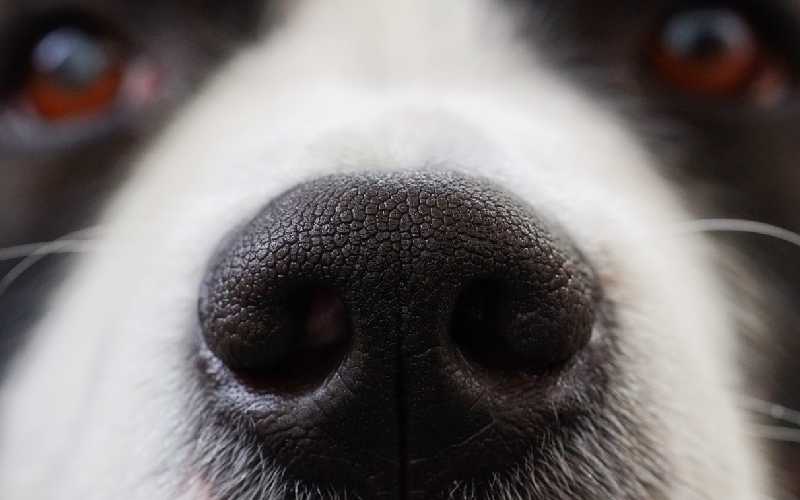I often get asked ‘Why do dogs have wet noses? The nose of a dog is wet because dogs use their noses to receive information about the world around them. In short, a wet dog nose is a healthy dog nose and is what you want to see.
Why do dogs have wet noses? The Science Behind the Wet Nose!
To begin, in order for smells to be detected and interpreted by dogs, air must be able to reach the part of the olfactory system that receives and analyses these scents. This is done through nasal passages which are lined with mucous membranes containing olfactory receptors – that is, cells in the epithelium which are specialised to detect molecular information. The nasal cavity of a dog is contained within the skull and therefore protected from injury. Additionally, because these structures are largely made up of bone and cartilage , they are much lighter than other bones in the body. When a dog inhales, air is drawn into the nasal passages and over top of these olfactory receptors. Because dogs are constantly sniffing in order to receive this information, it makes sense that their noses would be wet most of the time. Mucus lines the nasal cavity of dogs in order to trap dirt particles or other foreign chemicals breathed in with the air. It is also used for absorption and humidification – these processes are aided by a large number of sebaceous glands which produce sebum (lipid compounds).
When dogs exhale, moisture from the mucus evaporates onto the uncovered surface of the nose and dries near instantly leaving a wet, cool surface which feels good on a hot day when other parts of the body would otherwise be exposed to direct sunlight or heat (e.g., a dog’s nose never gets sunburned).
How do dogs taste food?
As stated in this article, dogs have fewer taste buds than humans and other animals – about 700 versus over 9,000 in humans. While this number is higher than other animals which may have as few as 100 taste buds (cats and many rodents), it means that dogs have a far more sensitive sense of smell to make up for the lack of taste sensation.
Taste depends on receptors found in different areas of the mouth – some which register sweet things, others bitter, and so on. When a dog licks his mouth, the receptors are stimulated by the moist tongue.
In addition to taste receptors in the oral cavity of dogs as well as on their tongues , there are also other types of sensory receptor cells all over a dog’s body which help him determine what is happening around him. These include thermoreceptors for when it gets too hot or cold, nociceptors that give information about the level of pain, pressure receptors on paws to tell if they are touching something rough/hot/cold, proprioceptors in joints and muscles to allow dogs to detect if they are moving in the position that they want to be, and tactile receptors all over the body which give information about the texture of what a dog is touching.
If you enjoyed this article you might also like to read about Why is my Dog Scratching? and Why is My Dog Licking Paws?

